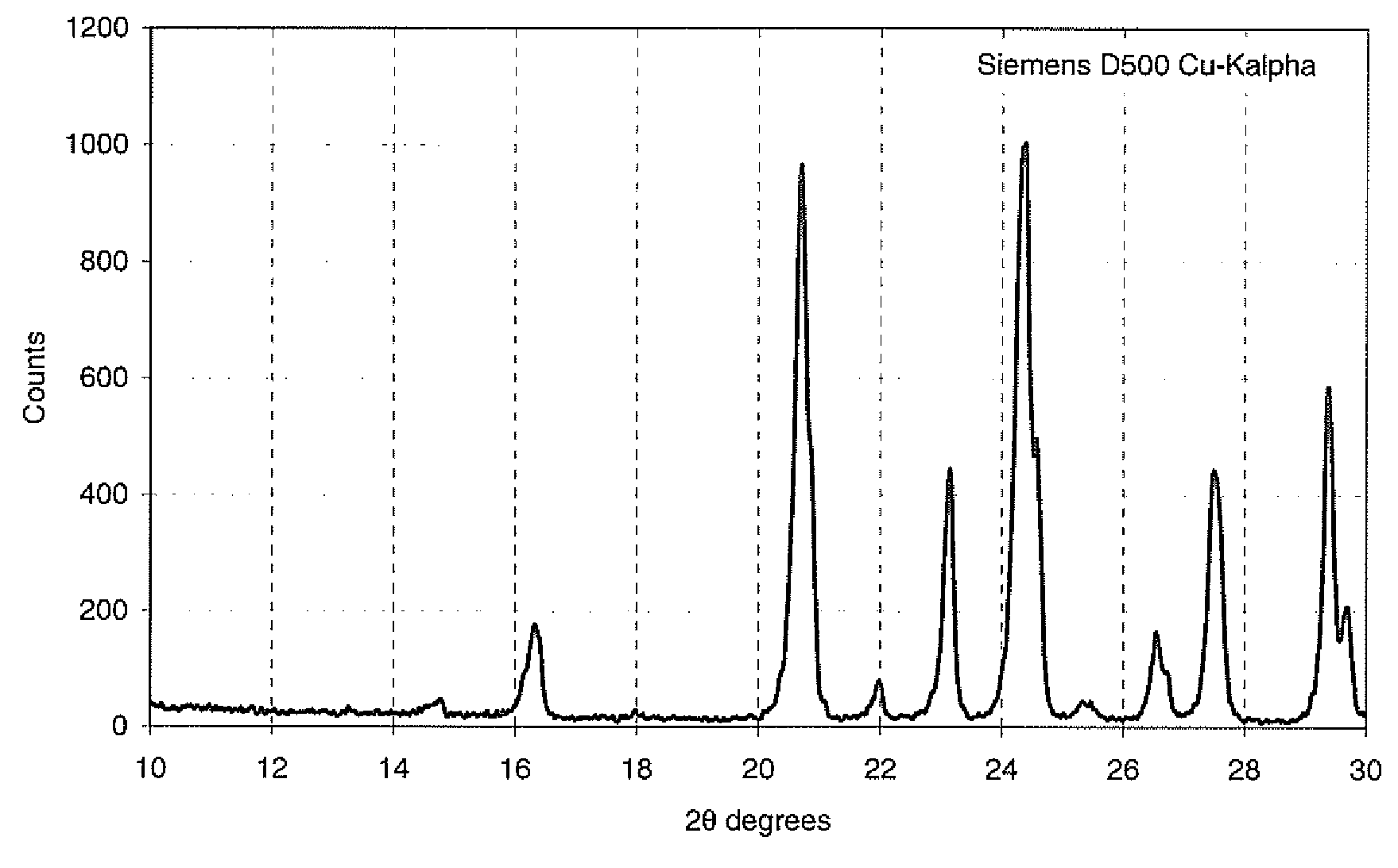Method of Making Active Materials For Use in Secondary Electrochemical Cells
- Summary
- Abstract
- Description
- Claims
- Application Information
AI Technical Summary
Benefits of technology
Problems solved by technology
Method used
Image
Examples
example 1
Preparation of LVP
[0039]Dry LVP precursor (5.00 g) consisting of a mixture of V2O3, LiH2PO4 and Super-P carbon with stoichiometry sufficient to generate a product of Li3V2(PO4)3 with 5% residual carbon was processed in a 125 ml acid digestion bomb half filled with water. The bomb was placed in a box oven preheated at 250° C. for 24 hours. The product was dried at 180° C. for 2 hours to yield 4.30 g of product whose XRD scan resembled Tavorite.
[0040]The tavorite-like product was then heated to 750° C. at a ramp rate of 10° C. / minute and maintained at this temperature for 1 hour under an argon atmosphere. The product of this reaction contained a significant amount of LVP.
example 2
[0041]H3PO4 (2.885 g, Aldrich) was added to a 45 ml bomb. Deionized water (20 ml) was added. Jet milled Li2CO3 (0.363 g, Pacific Lithium) was slowly added to the bomb. Then the V2O3 (1.471 g, Stratcor) was added. The mixture was briefly stirred and then the bomb was sealed.
[0042]The bomb was placed in a box oven which had been preheated to 250° C. and maintained at this temperature for 3 hours. Carbon (0.145 g, Super P grade from Timcal) was added to the product which was kept in its original water and then jar milled for 4 hours at approximately 15 RPM. The resulting slurry was then dried to form the hydrothermally treated precursor.
[0043]The hydrothermally treated precursor was then heated to 900° C. at a ramp rate of 5° C. per minute with an argon purge. The temperature was maintained for 8 hours to produce lithium vanadium phosphate (4.000 g).
PUM
 Login to View More
Login to View More Abstract
Description
Claims
Application Information
 Login to View More
Login to View More - R&D
- Intellectual Property
- Life Sciences
- Materials
- Tech Scout
- Unparalleled Data Quality
- Higher Quality Content
- 60% Fewer Hallucinations
Browse by: Latest US Patents, China's latest patents, Technical Efficacy Thesaurus, Application Domain, Technology Topic, Popular Technical Reports.
© 2025 PatSnap. All rights reserved.Legal|Privacy policy|Modern Slavery Act Transparency Statement|Sitemap|About US| Contact US: help@patsnap.com


